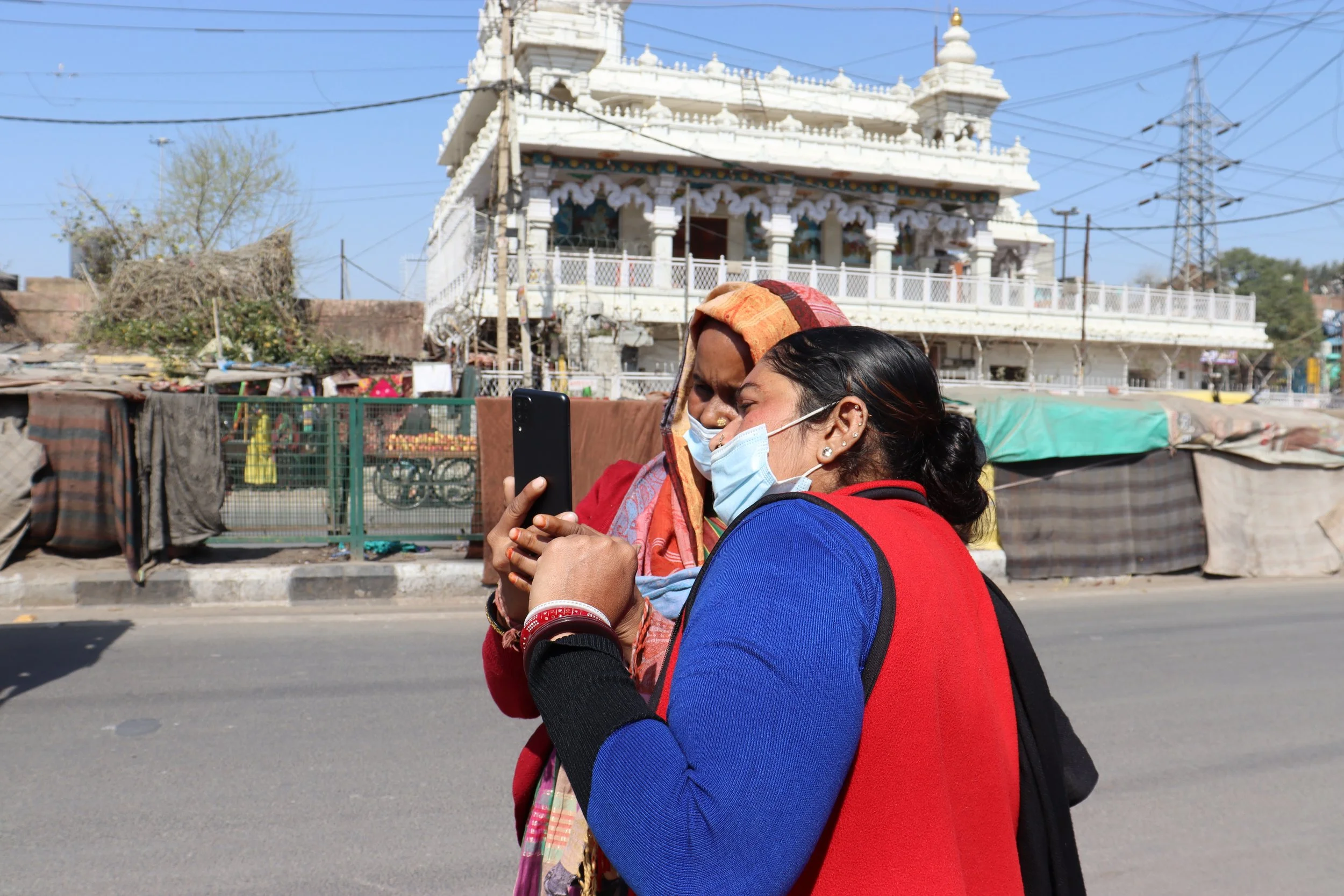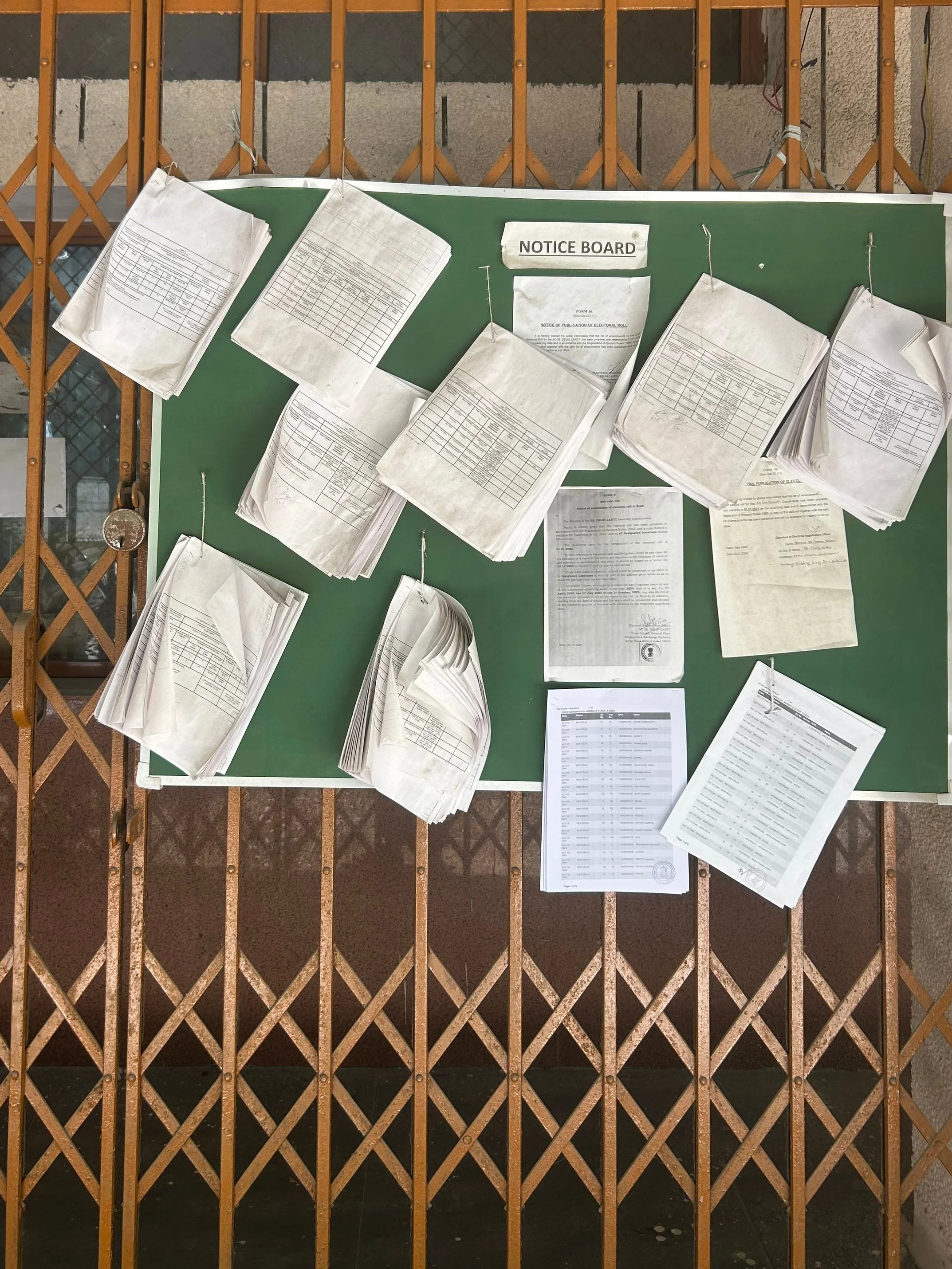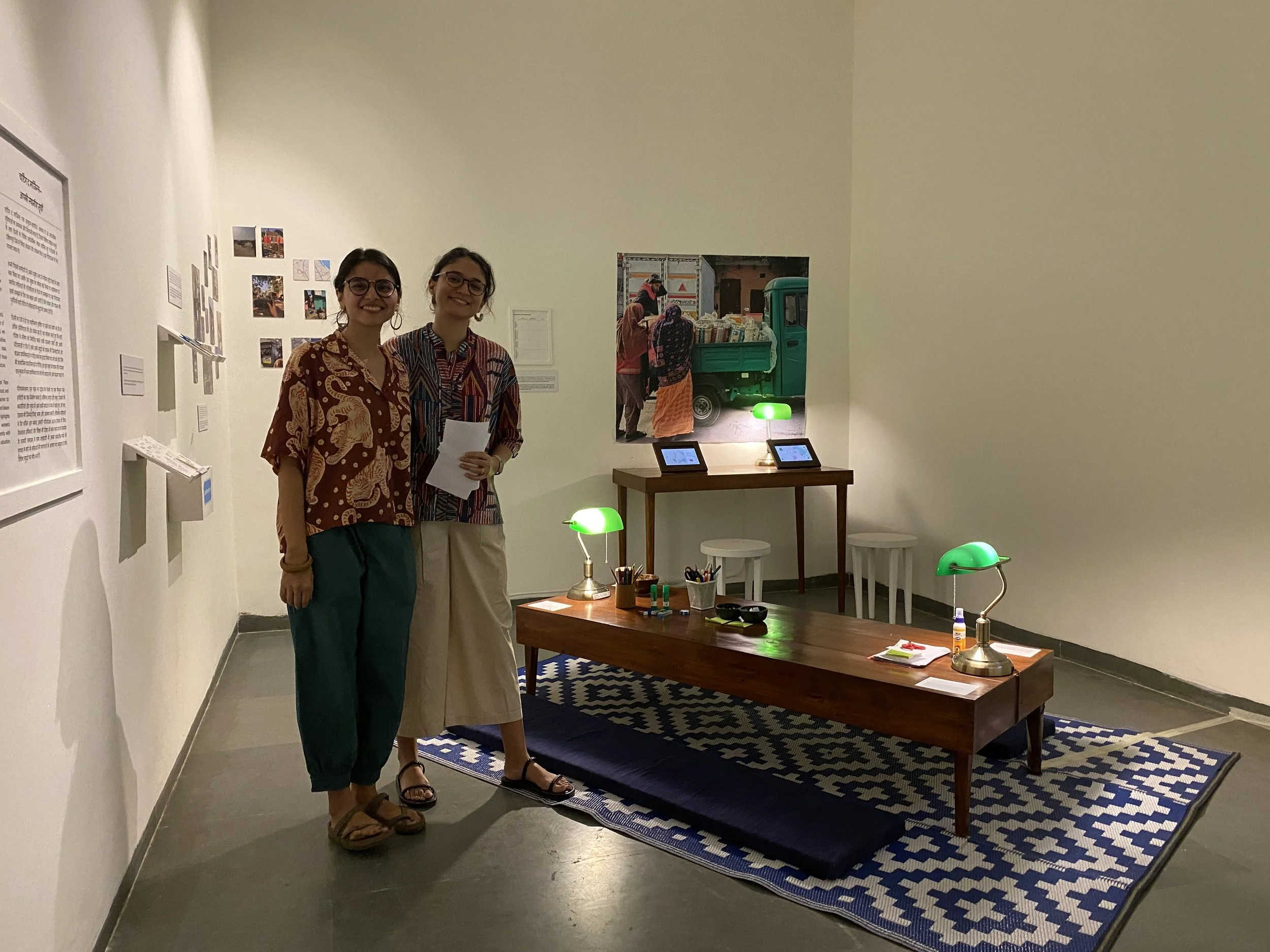Ways of Seeing with City Sabha
Monsoons have freshly arrived in Delhi, and Saleha and I are out on the terrace with some antennas, cables, and dongles. What looks like a scene from Koi Mil Gaya (picture Rohit and gang communicating with aliens) is in fact an attempt to create weather images. We’ve spent the last few weeks reading about amateur approaches to weather sensing; now we are finding ways to capture and decode satellite transmissions.
We are watching waveforms dance up-and-down, fast-and-slow, listening intently to the sound of static. Our focus breaks when a few drops of rain fall on the laptop screen. We wrap everything up and head back inside.
A few hours and some tinkering later, static comes to near silence. Instead, we hear a faint whistling. Not quite the ringing we were meant to hear, but not noise either. We might be onto something here. We look at each other giddy with excitement. Our aha moment.
Scanning the sky for signals | July 2025
Much of our work at City Sabha is about picking up on faint, scattered signals from people and places that suggest something is shifting. And a lot like satellite transmissions, these signals are not immediately legible. It takes exploring, experimenting, failing, yet trying again, and finding joy in the process. But when the signals finally appear – a citizen’s voice gaining space, a state department shifting course, or a moment of dialogue in decision making – it feels like that aha moment again.
Three years ago, when I joined City Sabha, I came armed with tools I’d learned in urban planning and theories of people’s participation I had researched in my dissertation. What followed was a slow unlearning - a realisation that working on the ground doesn’t lend itself to set rules or standard procedures. What I do know now, though, is that it starts with meeting people where they are.
An instance I love going back to is our community mapping work with women street vendors. With barriers of language and literacy and little exposure to maps or GIS, we turned to more familiar and accessible tools. The women documented their neighbourhood on foot, using their phones to photograph spaces they moved through, worked in, feared, or cherished. These photos served as starting points for conversations about work, mobility, and everyday experiences in public spaces.
Sangeeta ben and Sona ben using photo-voice as a tool to map their spaces of work and leisure in Raghubir Nagar | February 2022
“But did this work translate into any real change?” is a question we often get asked. I think of the small yet powerful shifts I witnessed. Week on week, the women went from feeling helpless to demonstrating agency, creativity, and ownership. And I realised, change can start small. Sometimes change looked like a shy Babita ben raising her hand and answering a question unprompted, and other times it looked like Usha ben, who now spoke about her rights with confidence.
Our engagement culminated in a public exhibition where the women shared firsthand accounts of identity, migration, marginalization, and lived realities with policymakers, researchers, and residents from other parts of the city. In that space, their voice mattered, and they were equal participants in shaping how the city is seen and experienced.
Sunita ben and Asha ben at the Beyond the Blueprint exhibition | Khoj Studios, December 2022
Discussions on infrastructure gaps in Rawta village with local women | March 2025
These micro transformations aren’t easy to measure, but when paid close attention to, they amount to meaningful insight into how change begins. Over time, I’ve also come to understand that for change to be sustained, it has to move from the everyday to the systemic. Communities know what’s best for them and how to improve their spaces, but there are very few structured ways for them to engage with the state.
How can communities’ deep wisdom and insight reach decision makers? And how might governments, planners, and policymakers engage better with citizens? Bridging this gap has been a core focus of what we do at City Sabha. Building the People’s Place Inventory and implementing it in diverse contexts has not only taught me lessons in communication and facilitation, but I’ve also learned to recognise that even within faulty systems, there are individuals who want to act and are open to listening when approached with collective strength.
In one meeting between the residents of an urban village and the District Magistrate, joined by urban local agencies across the board - from MCD and DDA to DJB and PWD - I saw the complexity of Delhi’s governance structure unfold in real time. Multiple agencies, overlapping jurisdictions, and no clear accountability. We entered with residents who had spent years navigating the consequences of that fragmentation. One by one, the community put forth their issues - missing land titles, diminishing water bodies, poor drainage, lack of safety, and so on. For each issue, the concerned authorities were called out.
The aftermath wasn’t resolution, but a series of responses: an official taking notes, someone brushing off responsibility, a department acknowledging a service gap, a phone number exchanged, and many promises made as they so often are. It didn’t feel like a win. But for that one hour, space was held for voices rarely heard, and a dialogue began to take shape.
Publics waiting game in a Government Office (sarakari daftar) | June 2025
At a place like City Sabha that is driven by curiosity and collaboration, I’ve learned to stay curious in times of ambiguity and to welcome moments of clarity when they arrive quietly. I’ve had the freedom to explore, experiment, and apply. To speak my mind and be heard. To interact with people from different disciplines. The joy of friendship and mentorship. To observe even when I can't contribute. To think big and think through. The opportunity to hone my skills and learn new ones. The list goes on.
None of this would have been possible without the culture City Sabha has intentionally fostered, one that holds space for many ways of seeing.
It’s a bit like that day on the terrace. Unsure what exactly we were picking up, but tuned in, curious, hopeful, and paying attention.
Happy five years to this special place.






